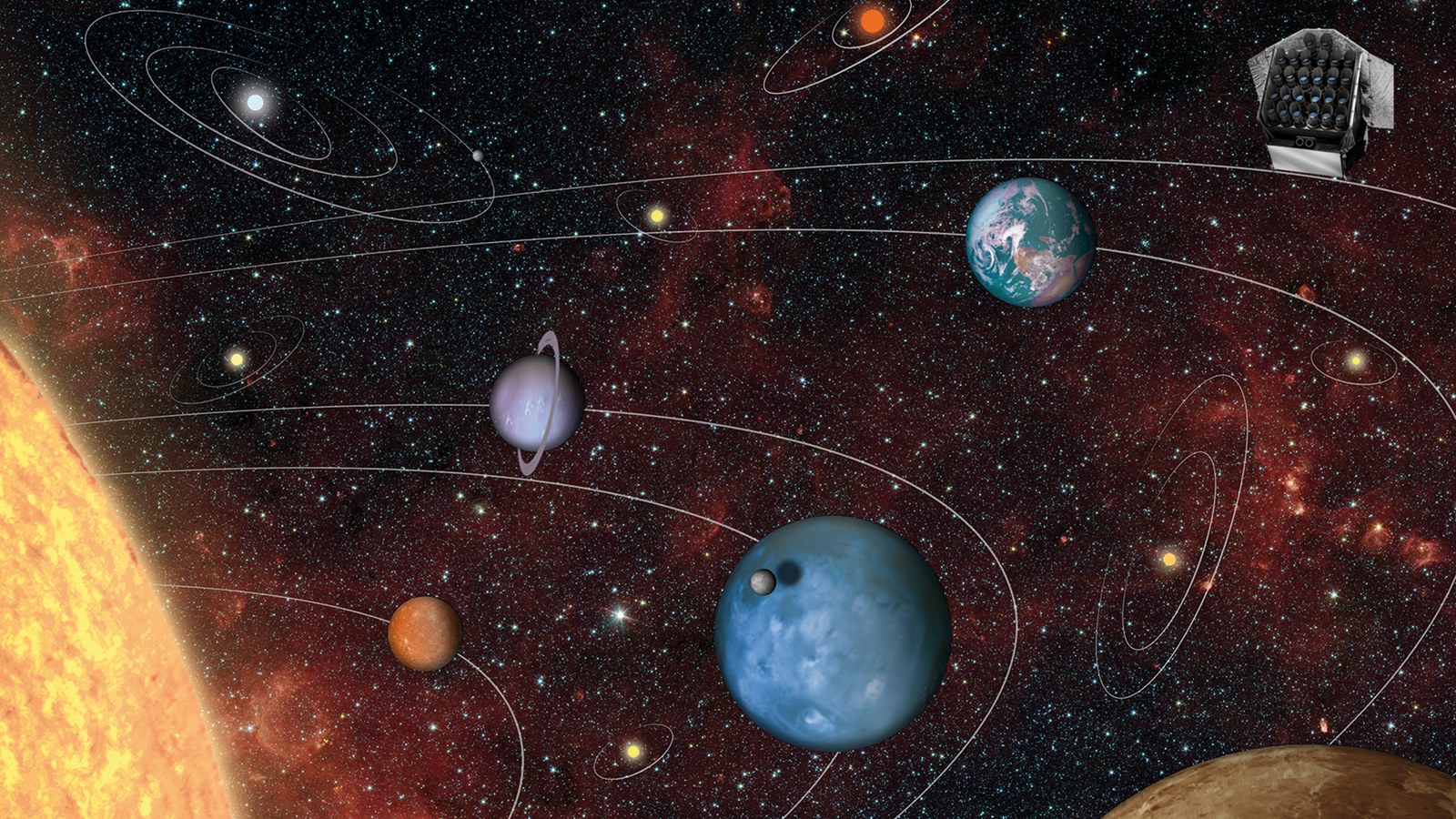PLATO

Wie entstehen und entwickeln sich Planeten und Planetensysteme? Ist unser Sonnensystem etwas Besonderes oder gibt es andere Systeme wie unseres? Gibt es Planeten mit dem Potenzial der Habitabilität? Mit den allgemeinen wissenschaftlichen Zielen der PLATO-Mission sollen diese Fragen beantwortet werden.
PLATO (PLAnetary Transits and Oscillations of stars) is a space telescope and ESA’s M3 mission of the Cosmic Vision Programme. It will search for transiting extrasolar planets, down to the size of the Earth, orbiting solar-like stars with orbital periods up to one year. The orbits of these planets will be within the habitable zone, which is the region around a star in which a rocky planet with atmosphere can sustain liquid water on its surface. PLATO will obtain high-precision light curves from tens of thousands of stars obtaining accurate measurements of their radii, masses, and ages. Transiting planets will be characterised for their radius from space photometry, and mass, with precise spectroscopic measurements from ground. It will be the first time that planetary systems will be characterised with such degree of detail in such large numbers. PLATO will bring about a radical change in our understanding of stellar interior and evolution, planetary systems, and their capacity to host life.
The PLATO Consortium is under the lead of the PI (Heike Rauer, DLR Institute of Planetary Research) who with her local team provides the overall consortium management together with ESA and contributing partners. PF leads the tasks responsible for the definition of the planet search and planet characterisation tools exploiting the scientific data. PF also leads the team demonstrating and verifying the overall performance of the PLATO project during the different mission phases and leads the team responsible for the instrument calibration and operations. The institute is also in charge of the design and implementation of the front-end electronics of the two fast cameras which are associated with the fine guidance of the spacecraft and the precise measurements of very bright stars.
In 2022 PLATO has successfully passed the Critical Milestone review, which verified the maturity of the complete space segment (spacecraft platform and payload module), confirming the solidity of the spacecraft-to-payload interfaces, the payload schedule with particular focus on the series production of the 26 cameras, and the robustness of the spacecraft schedule. The project has also successfully undergone the Ground Segment Requirements Review. On the hardware side in our institute, the Planetary Sensorsystems department has manufactured, tested, and delivered in 2021 two structural-thermal models of the front-end electronics of the PLATO fast cameras (F-FEE) and has manufactured and tested the engineering model of the F-FEE, which was delivered in 2022.
Hardware Participation of the DLR Institute of Planetary Research
- F-FEE (Front-end electronics) of the fast cameras
Scientific Participation of the DLR Institute of Planetary Research
- Mission science performance definition and validation
- Mission calibration and operation planning
- PLATO science exploitation
Management of the PLATO Mission Consortium by DLR Institute of Planetary Research
PI: Heike Rauer
Further DLR Participation
Institut für Optische Sensorsysteme
